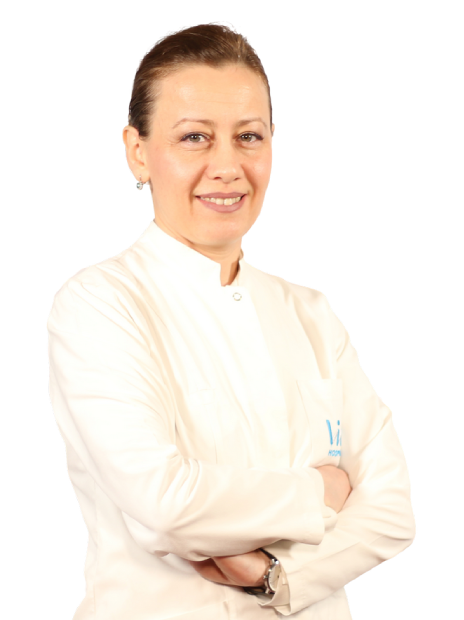Curiosities About Thyroid Cancer and Radioiodine Treatment
Today, radionuclide therapy is one of the leading models of cancer treatment. When radioactive agents are used in a controlled and purposeful manner, they positively affect the treatment of certain diseases and quality of life. The primary goal is to deliver radionuclides to the cancerous tissue and to protect normal tissues. The side effects of these methods are more limited compared to other methods. In addition, after it is given to the patient for treatment, it can be determined by taking images in which part of the body and how effective it is. Liv Hospital Nuclear Medicine Specialist Assoc. Prof. Dr. Emel Ceylan Günay talked about the curious things about radioiodine treatment.
What is atomic therapy?
'Radioiodine' therapy is popularly known as atomic therapy. The beta rays emitted by radioactive iodine 131 are used for treatment, while the longer-range gamma rays allow images to be obtained. Atomic therapy is administered in capsule or liquid form and taken by mouth. The liquid form tastes like water and does not bother the patient.
Who can receive the treatment?
Atom therapy is used to treat hyperthyroidism (toxic goiter), in which the thyroid gland works too fast, and thyroid gland cancers. It is used in low doses for hyperthyroidism and in higher doses for thyroid cancer. This treatment is not suitable for pregnant and breastfeeding patients. Otherwise, it can be administered to patients of any age and sex and repeated if necessary. One application is usually sufficient with a well-calculated dose. However, in some patients, the disease may be more resistant or widespread and multiple treatments may be required.
Are there any side effects of atom therapy?
Atom therapy may have some minor side effects. In rare cases, pain or tenderness in the neck may be observed, albeit temporarily. Swelling of the salivary glands may be observed. Nausea may occur in the early period after treatment in patients with stomach disorders. However, it is possible to prevent or minimize these effects with some simple recommendations. Patients can become pregnant, give birth and breastfeed after atom therapy. However, we do not recommend patients to become pregnant for six months after treatment.
What is the process after atomic therapy?
If the dose the patient has received is at a level that requires hospitalization, they stay for a while in specially prepared rooms for isolation. These rooms are usually bright and comfortable. There are special materials on the walls and doors of these rooms, but they are not noticeable from the outside. Patients can be discharged after the amount of radiation emitted from the radioiodine on the patient has decreased and is below the legal dose limit for public exposure. Although different for each patient, patients can usually be sent home within two to three days.
What should patients pay attention to after discharge?
There are three important issues to be followed after atomic therapy. Distance, duration and cleanliness.
Depending on the dose the patient received, there are rules to be observed for about 1-2 weeks. Such as not being in crowded environments for a long time, not being in close proximity with household members for a long time. Hygiene is another important factor. Since the administered radioiodine is excreted in the urine, care should be taken to clean the toilet, laundry and utensils such as cutlery.
Recommendation for iodine-poor diet before radioiodine treatment
It is recommended that you restrict iodine-containing substances and foods for the periods recommended by your doctor before treatment. The aim here is to increase iodine starvation before treatment. After treatment, you can return to your normal diet.
Recommended to be restricted:
- Iodized salt (non-iodized salt can be used)
- Cough syrups and vitamin preparations containing iodine
- Vitamin and mineral medicines containing iodine
- Iodized dressings and mouthwashes
- Hair coloring
- Tincture of iodine
- Seafood (fish, shrimp, etc.)
- Milk and dairy products (milk, yogurt, buttermilk, etc.)
- Soy sauces
- Ready-made canned food, ready-made delicatessen products (salami, sausage, etc.)
- Salty foods such as pickles, chips etc.
* Contents of this page is for informational purposes only. Please consult your doctor for diagnosis and treatment. The content of this page does not include information on medicinal health care at Liv Hospital .
